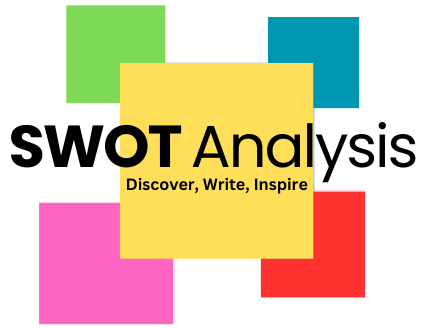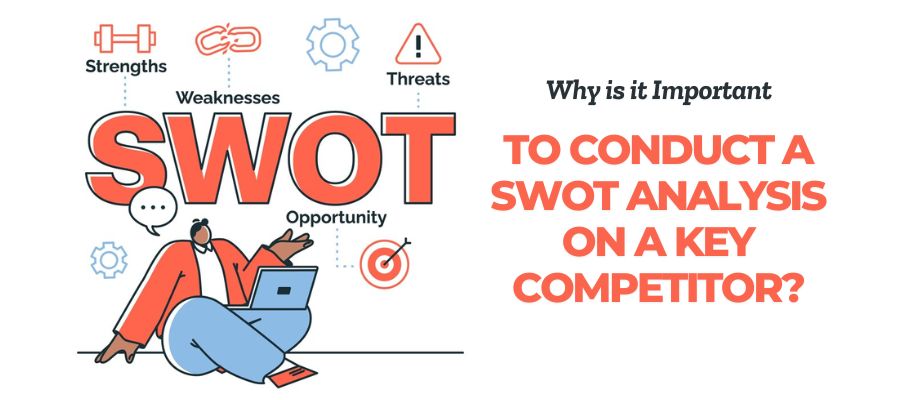Conducting a SWOT analysis is a crucial step for businesses aiming to understand their strengths, weaknesses, opportunities, and threats. However, many companies stumble in this process, leading to ineffective strategies. This article explores common mistakes organizations make during their SWOT analysis, helping them avoid these pitfalls and develop more effective strategic plans.
Common Pitfalls in SWOT Analysis
Overlooking External Factors
One major mistake companies make is not paying attention to external factors that can impact their business. This includes market trends, economic conditions, and competitor actions. Ignoring these can lead to poor decision-making and missed opportunities.
Ignoring Internal Weaknesses
Another common error is failing to recognize internal weaknesses. Companies often focus too much on their strengths and overlook areas that need improvement. This can result in vulnerabilities that competitors might exploit.
Misinterpreting Data
Data can be tricky. Companies sometimes misinterpret the information they gather, leading to incorrect conclusions. This can skew the SWOT analysis and result in misguided strategies.
A thorough SWOT analysis should consider both internal and external factors to create a balanced view of the company’s position.
Misjudging Market Trends
Failing to Adapt to Changes
Many companies struggle to keep up with the fast pace of change in the market. Ignoring new trends can lead to missed opportunities. Here are some common reasons for this:
- Lack of research on current market conditions.
- Resistance to change within the organization.
- Overconfidence in existing products or services.
Underestimating Competitors
Businesses often underestimate their rivals, thinking they are not a threat. This can be dangerous. To avoid this pitfall, companies should:
- Regularly analyze competitor strategies.
- Stay informed about new entrants in the market.
- Monitor competitors’ customer feedback and reviews.
Neglecting Customer Feedback
Listening to customers is crucial for success. Companies that ignore feedback may miss important insights. Here are some ways to gather and use customer feedback effectively:
- Conduct surveys and polls.
- Use social media to engage with customers.
- Analyze customer reviews and ratings.
Understanding market trends is essential for staying competitive. Companies must be proactive in adapting to changes, keeping an eye on competitors, and valuing customer input.
Inadequate Strategic Planning
Lack of Clear Objectives
A clear plan is essential for success. Without specific goals, teams can easily lose focus. Here are some key points to consider:
- Define what you want to achieve.
- Set measurable targets.
- Ensure everyone understands their role in reaching these goals.
Poor Resource Allocation
Using resources wisely is crucial. If resources are not allocated properly, it can lead to:
- Wasted time and money.
- Missed opportunities.
- Low team morale due to unclear priorities.
Inconsistent Follow-Through
Following through on plans is just as important as making them. Inconsistent actions can result in:
- Confusion among team members.
- Lack of trust in leadership.
- Failure to meet objectives.
Strategic planning is not a one-time task; it requires regular updates and adjustments to stay relevant.
Misalignment with Mission Statement
Ignoring Core Values
When companies conduct a SWOT analysis, they often forget to consider their core values. These values should guide every decision and strategy. If a company strays from its core values, it risks losing its identity and purpose.
Diverging from Long-Term Goals
Another common mistake is not aligning the SWOT analysis with long-term goals. Companies need to ensure that their strengths, weaknesses, opportunities, and threats are evaluated in the context of where they want to be in the future. This helps in maintaining focus and direction.
Miscommunicating Purpose
Lastly, miscommunication about the company’s purpose can lead to confusion among employees and stakeholders. A clear mission statement helps everyone understand the company’s goals and how their roles contribute to achieving them.
A strong mission statement acts as a compass, guiding the organization through challenges and changes in the market.
Overemphasis on Strengths
When companies focus too much on their strengths, they can miss important details that could affect their success. This can lead to serious problems in planning and decision-making.
Neglecting Weaknesses
- Companies may ignore areas where they are not performing well.
- This can result in a lack of improvement in crucial areas.
- Ignoring weaknesses can make a company vulnerable to competitors.
Overlooking Threats
- Focusing only on strengths can blind companies to potential dangers.
- They might not see changes in the market that could harm their position.
- This can lead to a false sense of security.
Underestimating Opportunities
- Companies may miss out on new chances for growth.
- They might not explore new markets or innovations.
- This can limit their ability to expand and succeed in the future.
In summary, while it’s important to recognize strengths, companies must also pay attention to weaknesses, threats, and opportunities to create a balanced strategy.
Failure to Update SWOT Analysis Regularly
Regularly updating a SWOT analysis is crucial for a company’s success. If a business does not keep its SWOT analysis current, it risks making decisions based on outdated information. Here are some common issues that arise from neglecting this important task:
Stagnant Strategies
- Companies may continue to follow strategies that no longer work.
- They might miss out on new opportunities in the market.
- Competitors can gain an advantage by adapting faster.
Outdated Information
- Market conditions change frequently, and old data can mislead decision-making.
- Customer preferences evolve, and failing to recognize this can lead to poor product offerings.
- Technological advancements can render previous strategies ineffective.
Missed Opportunities
- Companies may overlook new trends that could benefit them.
- They might fail to identify emerging threats that require immediate action.
- Not updating the SWOT analysis can lead to a lack of innovation and growth.
Keeping a SWOT analysis fresh is not just a good practice; it’s essential for staying competitive in a fast-paced business environment.
Lack of Stakeholder Involvement
Involving stakeholders in the SWOT analysis process is crucial for a well-rounded view of the company’s situation. When key voices are left out, important insights can be missed.
Excluding Key Perspectives
- Stakeholders can provide unique insights based on their experiences.
- Their input can highlight areas that management might overlook.
- Excluding them can lead to a narrow understanding of the business environment.
Limited Collaboration
- Collaboration fosters creativity and innovation.
- Working together can help identify strengths and weaknesses more effectively.
- Limited collaboration can result in a lack of buy-in for the final strategy.
Insufficient Feedback
- Regular feedback from stakeholders can refine strategies.
- It helps ensure that the analysis remains relevant and actionable.
- Without feedback, companies risk pursuing outdated or ineffective strategies.
Engaging stakeholders not only enriches the SWOT analysis but also builds a sense of ownership and commitment to the strategic plan.
Conclusion
In summary, many companies often make the mistake of not fully understanding their strengths, weaknesses, opportunities, and threats when doing a SWOT analysis. This can lead to poor decisions that hurt their business. To avoid this, businesses need to take their time and really think about each part of the analysis. They should gather input from different team members and look at data carefully. By doing this, companies can create better plans that help them succeed in a changing market.
Frequently Asked Questions
What is a SWOT analysis?
A SWOT analysis is a tool companies use to understand their Strengths, Weaknesses, Opportunities, and Threats. It helps them plan better.
Why is it important to update a SWOT analysis?
Updating a SWOT analysis is crucial because markets and conditions change. Regular updates help businesses stay relevant and competitive.
How can overlooking weaknesses affect a business?
If a business ignores its weaknesses, it might struggle to improve. Recognizing them can lead to better strategies and growth.
What happens if a company doesn’t consider external factors?
Not considering external factors can lead to poor decision-making. Companies might miss out on opportunities or fail to address threats.
Why should stakeholders be involved in the SWOT analysis?
Involving stakeholders ensures that different perspectives are considered. This can lead to a more comprehensive analysis and better decisions.
How can a mission statement impact a SWOT analysis?
A clear mission statement guides the SWOT analysis. It helps align the strengths and opportunities with the company’s goals.
Also Read: In a SWOT Analysis, Which of the Following Would Be Considered a Weakness of a Company?





